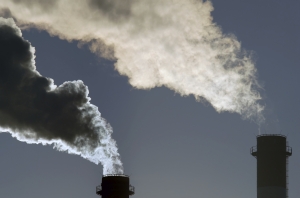Below, we provide an extract from our latest Market Update, “Reviewing the ERF Safeguard Mechanism – Toothless Tiger or Hidden Dragon?” released this week.
In order to better understand the coverage of the proposed ERF Safeguard Mechanism, and the potential size of Australia’s new compliance market, analysis initially projected individual facility greenhouse gas emissions (GHG) for each “covered facility” (emissions over 100,000 t/Co2e) out to the fiscal year (FY) 2025 in order to identify baseline exposure.
Analysis then overlayed proposed safeguard rules in order to examine the impact of policy on exposed emissions and compliance demand for ACCUs, notably the treatment of the electricity sector, the setting of “high point” baselines and the treatment of new and expanding facilities.

Figure 3 above breaks out historical emissions data for the years FY 2009-10 and FY 2013-14 for the 256 facilities identified to be covered under the scheme. These years are of particular interest as they span the safeguard historic baseline period.
Facilities displayed below the solid black line represent facilities that reduced emissions in FY13-14 against FY09-10 levels, while facilities above the solid black line have increased emissions in FY 2013-14 from FY09-10.
In total, 114 facilities increased emissions from FY2009-10 to FY2013-14, while 90 facilities reduced emissions over the same period, with the remaining facilities either “new” or showing no change. Despite a larger number of facilities increasing emissions, the total emissions of reported facilities decreased by 16 Mt CO₂-e from FY 2009-10 to FY 2013-14.
The electricity generation sector was responsible for a decrease of 24 Mt CO₂-e from FY 2009-10 to FY 2013-14, due largely to the impact of the Renewable Energy Target (RET), reduced electricity demand and the Carbon Pricing Mechanism (CPM). Brown coal generators which received compensation under the CPM, such as Hazelwood and Loy Yang A, increased emissions from FY2009-10 to FY2013-14.
A net decrease in emissions in the manufacturing sector was found from FY09-10 to FY13-14 of 1 Mt CO₂-e. Notably, a reduction in emissions from Port Kembla Steelworks is seen from FY09-10 to FY13-14 due to decreased production resulting from the closure of the site’s No. 6 blast furnace in 2011 along with increasing international pricing pressures.
In the mining sector, comprised of the largest number of facilities, emissions rose from FY09-10 to FY13-14 by 8 Mt CO₂-e due to an increase in production. Further emissions increases of 1 Mt CO₂-e were seen in the transport sector.
Notably, while a larger number of facilities increased their emissions over the reporting period analysed, the net reduction in emissions across all facilities indicates the sizable representation of the electricity generation and manufacturing sectors (covering the oil & gas, metals, petroleum & coal, and chemicals industries) on covered emissions.
At a high level, figure 3 reflects the relative exposure of analysed sectors, whereby industries on an upward emissions trend theoretically face greater exposure to the Safeguard Mechanism due to their likelihood of breaching baselines should emissions growth continue. This is notable for the Mining and Transport sectors, with the latter not afforded the baselining flexibility of natural resources firms.
Inversely, while emissions are projected to strongly increase across the electricity and key industrial sectors, headroom against historical high point baselines created by decreasing emissions over the past five years – along with baselining flexibility – means few are likely to be held accountable for their emissions.
In practice, the individual emissions profile – both historical and projected – of each facility is critical to determining exposure to the safeguard scheme, along with the overlay of industry specific rules as outlined by the policy.
With emissions growth projected to be high, the significant cumulative size of emissions covered by the scheme reflects the potential for the mechanism to more effectively control emissions, and create sizable compliance demand, even should principles such as historic high point baselines be maintained.
The above is an extract from our latest Market Update, “Reviewing the ERF Safeguard Mechanism – Toothless Tiger or Hidden Dragon?” released earlier this week. To view this report, please click here.










